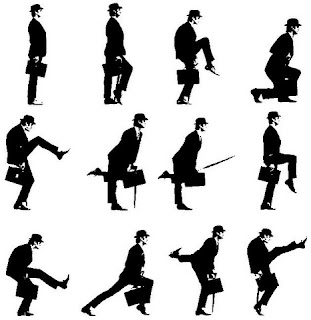"[h]uman beings are not born walking, nor do they all walk in the same way. There is, as Marcel Mauss observed in his famous essay of 1938 on ‘techniques of the body’, no natural way of walking. In Japan, at least traditionally, it was conventional to walk ‘from the knees’, in what looks to us like a rather shuffling gait, but one that actually makes very good sense when your footwear is sandals, and when you have to walk on very steep terrain, as is common in the Japanese countryside, especially when carrying heavy loads slung from either end of a long, supple pole balanced across one shoulder. We in Europe, by contrast, are taught to walk from the hips, and not from the knees, while keeping the legs as straight as possible. And our carrying devices, from rucksacks to suitcases, are designed with this posture in mind."
Tim Ingold - Beyond biology and culture. The meaning of evolution in a relational world, p.8.
***aizbraucot tēmā mazliet tālāk, atcerējos, ka atbilde uz jautājumu "kā iet?" man vairākkārt bijusi pavisam nopietna problēma. divi interesantākie gadījumi:
1) reiz pēc stipru pīpju pīpēšanas aizdomājos par iešanas mehānismu - tu vari būt visādos pusapzinātos stāvokļos, tomēr kājas nes pašas, atliek vien ar degunu stūrēt. tad nu centos šo mehānismu papētīt, koncentrējot uzmanību uz muskuļu iztiepšanos / savilkšanos, aizdomājoties, cik daudzi tādi ir iesaistīti it kā vienkāršajā procesā. un notika tas, kas mēdz notikt, kad tu atskrūvē smalku ierīci, lai mazliet ieskatītos, kā tur griežas zobrati vai deg lampiņas: automātika sāka niķoties un biju spiests piesēst tuvākajā vietā, lai mēģinātu ~nedomāt par balto pērtiķi.
2)
bojāts bioloģiskā metronoma taimkods


